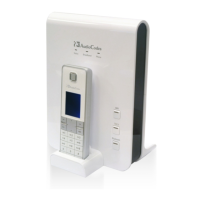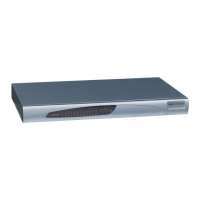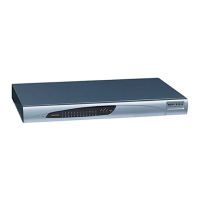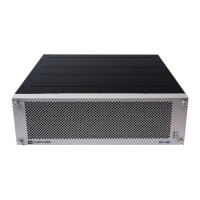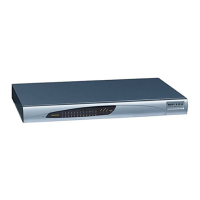CHAPTER68 Configuration Parameters Reference
Mediant 1000 Gateway & E-SBC | User's Manual
Parameter Description
The above behavior is done upon one of the following scenarios:
■ The device is physically disconnected from the network (i.e.,
Ethernet cable is disconnected).
■ The device can't communicate with the Proxy Sets
(according to the Proxy Keep-Alive mechanism) associated
with the destination IP Groups for matching routing rules in
the Tel-to-IP Routing table, and no other alternative route
exists to send the call.
■ The IP Connectivity mechanism is enabled (see the
AltRoutingTel2IPEnable parameter) and there is no
connectivity to any destination IP address configured for
matching routing rules in the Tel-to-IP Routing table.
Note:
■ If the AltRoutingTel2IPEnable parameter is enabled, the
Busy Out feature does not function with the Proxy Set keep-
alive mechanism. To use the Busy Out feature with the Proxy
Set keep-alive mechanism (for IP Groups), disable the
AltRoutingTel2IPEnable parameter.
■ Analog: The FXSOOSBehavior parameter determines the
behavior of the FXS endpoints when a Busy Out or Graceful
Lock occurs.
■ Analog: FXO endpoints during Busy Out and Lock are
inactive.
■ Digital: The Busy Out behavior depends on the PSTN
protocol type.
■ Digital: The Busy Out condition is also applied per Trunk
Group. This occurs if there is no connectivity to the Serving
IP Group of a specific Trunk Group (configured in the Trunk
Group Settings table). In such a scenario, all the physical
trunks of the Trunk Group are set to the Busy Out condition.
Each trunk uses the out-of-service method according to the
ISDN/ CAS variant.
■ Digital: To configure the method for taking trunks/channels
out-of-service, see the DigitalOOSBehaviorForTrunk_x
parameter for per trunk or the DigitalOOSBehavior parameter
for all trunks.
'Graceful Busy Out
Timeout'
configure voip >
sip-definition
settings >
graceful-bsy-out-t-
out
[GracefulBusyOutTimeou
t]
Defines the timeout interval (in seconds) for out-of-service
graceful shutdown mode for busy trunks (per trunk) if
communication fails with a Proxy server (or Proxy Set). In such a
scenario, the device rejects new calls from the PSTN (i.e.,
Serving Trunk Group), but maintains currently active calls for this
user-defined timeout. Once this timeout elapses and there are
still active calls, the device terminates the calls and takes the
trunk out-of-service (sending the PSTN busy-out signal). Trunks
without any active calls are immediately taken out-of-service
regardless of the timeout.
- 1196 -
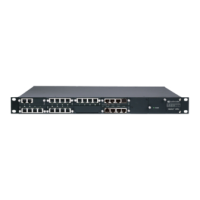
